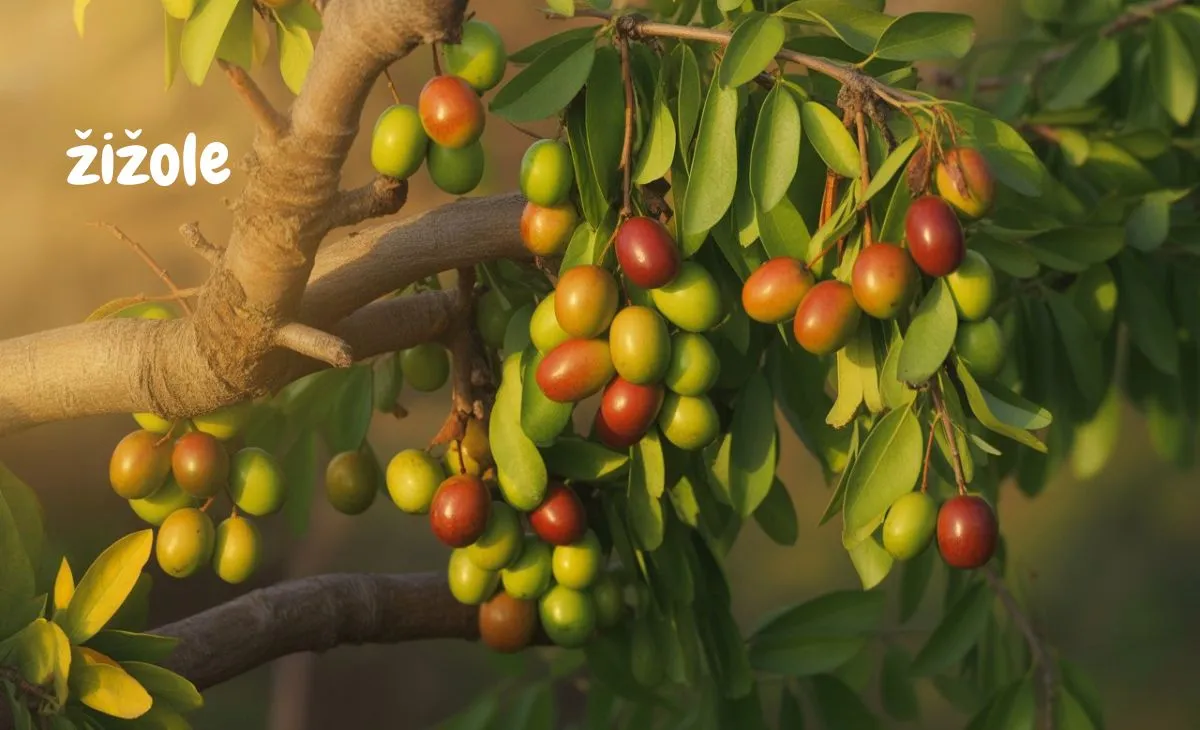In the world of natural wellness and forgotten fruits, few treasures remain as mysterious and underappreciated as Žižole. This small, sweet, and tangy fruit—often referred to as the “Jujube” in some regions—has been part of human diets for centuries, yet it’s only recently regained attention for its incredible health benefits, cultural roots, and potential in sustainable agriculture.
This article explores everything you need to know about Žižole: from its historical origins and nutritional benefits to its cultivation, culinary uses, and global revival.
1. A Fruit With Ancient Origins
Long before modern superfoods took the spotlight, Žižole had already earned a place in ancient diets. Historical records show that it was cultivated in China over 4,000 years ago, prized for its energizing properties and unique sweetness. From there, it spread through the Silk Road into the Mediterranean, becoming a cherished part of Southern European agriculture.
Ancient healers valued it as both food and medicine. In traditional Chinese medicine, it was considered a “tonic fruit,” promoting sleep, digestive balance, and emotional calm. In Mediterranean cultures, it symbolized endurance—surviving dry climates and producing fruit when other crops failed.
2. Botanical Beauty: The Tree Behind the Fruit
The Žižole tree is as resilient as it is graceful. Standing between 3 to 10 meters tall, it thrives in warm, arid regions. Its small, glossy leaves and thorny branches give it a rugged charm, while its fragrant white blossoms attract bees and pollinators throughout spring.
The fruit itself matures from green to reddish-brown, with a texture that changes from crisp and apple-like to soft and date-like as it ripens. Each stage brings out a new flavor profile, making it a delight for both fresh and dried consumption.
3. Nutritional Powerhouse
Žižole isn’t just another exotic fruit—it’s a true nutritional gem. A 100-gram serving contains:
- Vitamin C: Nearly 20 times more than citrus fruits, boosting immunity.
- Antioxidants: Including flavonoids and phenolics that protect against cellular damage.
- Fiber: Aids digestion and supports gut health.
- Minerals: Such as potassium, phosphorus, and iron for muscle and bone function.
- Natural sugars: Provide sustained energy without the crash of processed sweets.
These qualities make it not just a healthy snack, but also a natural remedy in many cultures.
4. Traditional and Modern Uses
From herbal teas to sweet preserves, Žižole has found its way into countless traditional recipes.
In order to relieve coughs and sore throats, people in Southern Europe frequently boil the fruit into syrups. In Asia, dried Žižole is mixed with other herbs to make immune-boosting infusions and soothing tonics.
Chefs and dietitians have rediscovered its flexibility in recent years.
It can be used in:
- Smoothies for a natural energy lift.
- Baked goods as a sweetener alternative.
- Fermented beverages, such as kombucha-style drinks.
- Herbal teas, offering a natural honey-like flavor.
Its mild sweetness and chewy texture make it a favorite among health-conscious foodies seeking organic alternatives.
5. The Cultural Symbolism of Žižole
Beyond taste and nutrition, Žižole holds symbolic meaning in many regions. In Croatia, where the fruit is known as Žižula or Žižole, it represents longevity and friendship. People gift it during autumn festivals as a token of good health and prosperity.
In Asia, it’s considered a symbol of love and fertility, often included in wedding rituals. Its enduring tree and long shelf life embody resilience—an attribute admired by farmers and herbalists alike.
6. Sustainability and the Future of Cultivation
In an era of climate change, crops like Žižole are becoming increasingly valuable. The tree’s natural resistance to drought, pests, and poor soil conditions makes it ideal for sustainable farming. It requires minimal water and chemical input, making it a perfect choice for regenerative agriculture.
Farmers in Southern Europe, North Africa, and Central Asia are reviving old Žižole orchards, seeing its potential in eco-friendly food production. Even urban gardeners are planting dwarf varieties in small spaces and balconies, thanks to its low maintenance needs.
7. Economic Opportunities
As demand for natural superfoods rises globally, Žižole could play a significant economic role. Export markets for dried and powdered versions are growing rapidly, especially in Europe and North America.
Small-scale farmers benefit most, as the fruit can be sold fresh, dried, or processed into jams, teas, and supplements. With proper branding and sustainable certifications, Žižole products have the potential to reach premium markets similar to goji berries or dates.
8. The Science Behind Its Health Benefits
Modern research supports what ancient healers already knew. Scientific studies have linked regular consumption of Žižole to numerous health benefits:
- Better Sleep: Natural compounds like saponins promote relaxation and deeper rest.
- Stronger Immunity: High antioxidant and vitamin C levels help fight infections.
- Heart Health: The fruit’s potassium and fiber aid in reducing blood pressure and cholesterol.
- Anti-Aging Effects: Antioxidants slow skin aging and enhance collagen production.
- Blood Sugar Control: Despite its sweetness, it helps regulate glucose levels due to its fiber content.
Researchers are also exploring its use in nutraceuticals and herbal medicine due to these properties.
9. How to Enjoy Žižole at Home
If you’re new to Žižole, there are several simple ways to include it in your diet:
- Eat it fresh: Like apples or plums.
- Dry it naturally: Leave it in the sun or use a dehydrator for a date-like snack.
- Brew it into tea: Combine with honey and ginger for a relaxing evening drink.
- Blend into smoothies: Adds a caramel-like sweetness without refined sugar.
- Use it in baking: Substitute for raisins in cakes or muffins.
Its adaptability makes it a fun ingredient for both traditional and experimental recipes.
10. A Fruit Worth Remembering
In today’s fast-paced world, we often forget the wisdom of ancient foods. Žižole stands as a reminder that the most powerful sources of nourishment are often those passed down through generations.
It’s not just a fruit—it’s a bridge between culture, sustainability, and wellness. Whether you enjoy it fresh from the tree or as part of a warm herbal tea, Žižole offers a unique taste of history and health combined.
Conclusion
From ancient Chinese gardens to modern European orchards, the story of Žižole is one of resilience, renewal, and rediscovery. As consumers continue to seek healthier, more sustainable choices, this remarkable fruit is finding its rightful place in the spotlight once again.
For those who appreciate the fusion of tradition, taste, and natural healing, Žižole is not just food—it’s a timeless symbol of balance and vitality.


